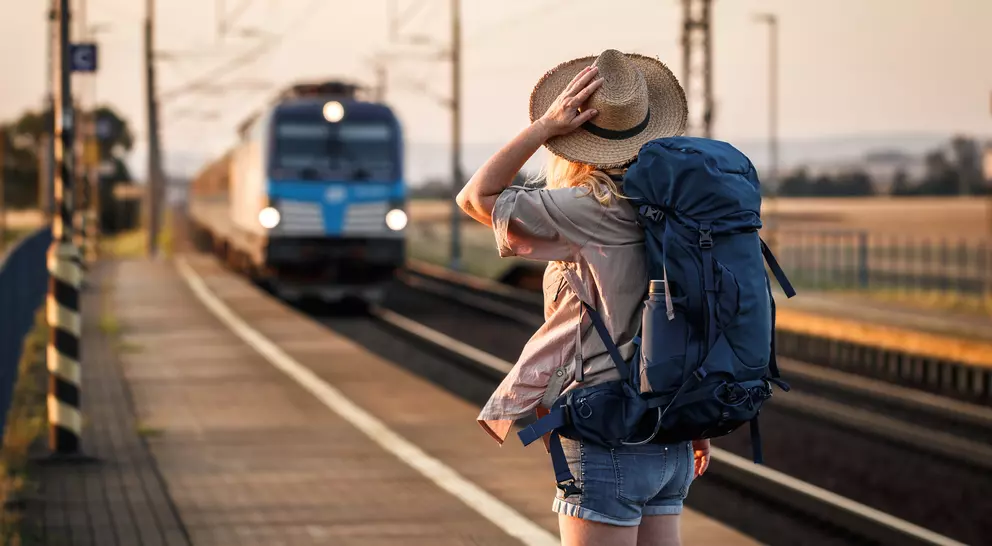Yes. U.S. citizens can visit Peru for tourism without a visa for stays of up to 90 days. A valid passport is required.
Discover Tailor-Made Peru Vacations
From the Amazon rainforest to Machu Picchu, a trip to Peru offers endless adventure.
Peru is a land of infinite contrasts, where ancient Inca ruins lay in the foundation of impressive colonial architecture and breathtaking landscapes stretch from the Andes to the Amazon. Among its many highlights are the patchwork terraces of the Sacred Valley and awesome Machu Picchu. Lesser-known gems include Arequipa, framed by snowcapped volcanoes, and the majestic Colca Canyon.
Featured Highlights
- Hitting a hot restaurant in dynamic Lima, one of the world's great food destinations
- Hiking the breathtaking Inca Trail for full immersion in the Andes
- Traveling by luxury train to mysterious Machu Picchu, perched high above the Sacred Valley
- Cruising down the Amazon to a remote jungle lodge hidden amid dense forest
- Exploring wild Colca Canyon, home to ruins, natural hot springs and Peru's iconic condors
- Discovering the country’s pre-Incan past at Trujillo, Gocta and Kuelap
Featured Peru Trip Ideas
Peru’s size and diversity mean no two trips will be the same.Goway’s tailor-made itineraries combine Inca heritage tours, culinary adventures, and scenic mountain routes, blending culture, adventure, and relaxation.
Read More
Essential Peru: Lima, the Sacred Valley & Machu Picchu
Cusco, Sacred Valley, and LimaClassic Peru: Lima, Cusco & Machu Picchu
Cusco, Sacred Valley, and LimaUltimate Peru & Ecuador: Machu Picchu & the Galapagos
Galapagos Islands, Quito, Cusco, Sacred Valley, and LimaPeru In-Style: Cusco, Sacred Valley & Machu Picchu
Cusco, Sacred Valley, and LimaBest of Peru: Canyons, Summits & Ancient Cities
Cusco, Sacred Valley, Lake Titicaca, Puno, Arequipa, and LimaHiking the Inca Trail: Lima, Cusco & Sacred Valley
Cusco and LimaDon't see the
perfect trip idea?
Request a custom quote.
Turn your travel dreams into reality with Goway. Our customized vacations take travellers to all corners of the world.
What do Goway's travellers say?

Get to know Peru before you go.
Best Time To Visit
Peru’s peak travel season runs from June to August.
This is when sunny skies and dry conditions create the best environment for trekking and coincide with vibrant festivals like Inti Raymi in Cusco. It’s also the busiest time at Machu Picchu, so early booking is essential. Arranging your trip six to eight months ahead of your planned visit is ideal.
May and September bring the same pleasant weather but with fewer crowds, making them ideal for those who prefer a quieter pace and more flexibility in securing top accommodations.
Mild winters in the Andes also create perfect conditions for cultural exploration without the intense summer heat. Whether you’re here for mountain adventures, Amazon wildlife, or coastal culinary tours, timing your trip can make all the difference. For a month-by-month breakdown of weather, events, and experiences, explore the best time to visit Peru.
What do the experts say?
For a unique experience visit an indigenous village high in the Andes for a Pachamama ceremony. I was fortunate to participate in one and the warmth of the people and how simple they lived, really touched my heart.
Dress for all weather types, climate can range from very warm and humid in Lima to cool and rainy in Machu Picchu and very hot and dry in the Sacred Valley
May to October is the best time to visit as it is the dry season with sunny days, clear skies, ideal for trekking and enjoy the landscape. However like in all Latin countries, the weather is unpredictable, so be ready if any rain show up during a sunny day
Everyone should make sure they try a Pisco sour - It's Peru’s national cocktail—a smooth, citrusy, and slightly foamy drink made with pisco, a type of grape brandy. It’s both refreshing and strong, with a sweet-tart balance and a signature foamy top from egg white.
It is astonishing how much incredible diversity of experiences can be packed into one country, Peru is full of deep cultural roots, a wide range of landscape, adventure and its delicious cuisine.
Places to Go in Peru
Handcrafted journeys to our most popular places to visit in Peru.
Machu Picchu
Often referred to as the “Lost City of the Incas”, Machu Picchu is located in the Cusco region of...
Often referred to as the “Lost City of the Incas”, Machu Picchu is located in the Cusco region of Peru. One of the most impressive ancient sites in the world, Machu Picchu is an icon of the Inca...

Cusco
The continent’s oldest continuously inhabited city, Cusco is located in southeastern Peru near the...
The continent’s oldest continuously inhabited city, Cusco is located in southeastern Peru near the Urubamba Valley of the Andes Mountain Range. Ever popular with tourists on a Peru vacation, Cusco...

Lima
The capital and largest city in Peru, Lima is located in the central part of the country. A melting...
The capital and largest city in Peru, Lima is located in the central part of the country. A melting pot of cultures, Lima offers a mixture of European, Andean, African and Asian influences to be...

Sacred Valley
Also known as the Urubamba Valley, Peru’s Sacred Valley is located near Cusco in the valley below...
Also known as the Urubamba Valley, Peru’s Sacred Valley is located near Cusco in the valley below the legendary Inca ruins of Machu Picchu. The area encompasses everything between Calca and Lamay,...

Lake Titicaca
If on a Peru vacation and heading here, Lake Titicaca is found in the Andes on the border of Peru...
If on a Peru vacation and heading here, Lake Titicaca is found in the Andes on the border of Peru and Bolivia. Regarding the volume of water, it is considered the largest lake in South America with...

Arequipa
Surrounded by three mountains in the southern coastal region of Peru is Arequipa. The “Legal...
Surrounded by three mountains in the southern coastal region of Peru is Arequipa. The “Legal Capital” of the country to be visited on a Peru vacation. Arequipa is home to the Constitutional Court and...
Travel Styles
Explore Peru by Travel Type
Ways to Travel
Discover your perfect travel style—crafted for every dream and journey.

Themes
Immersive adventures shaped by passion, such as food, culture, wellness, and wild discovery.

Collections
Curated journeys that capture the spirit, beauty, and essence of travel.

Featured
Extraordinary experiences handpicked to inspire, delight, and spark your wanderlust.

Ways to Travel
Discover your perfect travel style—crafted for every dream and journey.

Themes
Immersive adventures shaped by passion, such as food, culture, wellness, and wild discovery.

Collections
Curated journeys that capture the spirit, beauty, and essence of travel.

Featured
Extraordinary experiences handpicked to inspire, delight, and spark your wanderlust.
Frequently Asked Questions
Can U.S. citizens travel to Peru?
What is Peru best known for?
Peru is famous for mysterious Machu Picchu, its rich Inca heritage, vibrant Andean culture, world-class cuisine, and diverse landscapes ranging from the Amazon rainforest to the Andes mountains.
Why is Peru a good vacation spot?
Peru offers a unique mix of history, culture, adventure, and natural beauty, with experiences ranging from luxury train journeys to high-altitude treks and coastal culinary tours.
How many days do you need in Peru?
For first-time visitors, 10 to 14 days is ideal to explore Lima, Cusco, the Sacred Valley, and Machu Picchu at a comfortable pace. Longer trips can include Lake Titicaca, the Amazon, or Colca Canyon.
Is it safe for a woman to travel to Peru?
Yes, it is generally safe for women to travel to Peru, especially to popular tourist areas, but caution and vigilance should still be exercised due to risks of petty crime, sexual harassment, and potential for robbery. To enhance your safety, avoid walking alone at night, especially in deserted areas; use reputable taxi services or ride-sharing apps; and never leave your food or drinks unattended.
What is the best area to stay in Peru?
Where to stay in Peru depends on your interests, but the neighbourhoods of Miraflores and Barranco are among Lima’s best for culture and amenities, while Cusco is ideal for history and access to the Inca Trail. Northwest of Cusco, the Sacred Valley offers a more tranquil base near Machu Picchu; Arequipa is known for its colonial charm and safety.
How far in advance should I plan a trip to Peru?
You should plan a trip to Peru months in advance, especially for peak season (June to August). In particular, permits for the Inca Trail take about six months to a year to secure, while Machu Picchu tickets and other popular attractions need to be booked four to six months ahead. Aim to book flights and accommodations three to six months out during the busy period.
Unlock more by subscribing to our newsletter
With our newsletter, you’ll get access to regular communications that inspire you and help you explore the world your way







